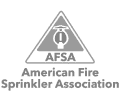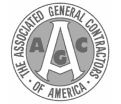When Do I Need Pressure Reducing Valves?
NFPA 14 requires all standpipes installed after 1993 to deliver a minimum residual pressure of 100 pounds per square inch (psi) at each standpipe outlet, whether installed on the ground floor or the roof. In larger buildings, high-rises, offices with ground-level water tanks, and other similar scenarios, the water pressure may not be sufficient for fire sprinklers and standpipes on upper floors. If this is the case in your building, you need a fire pump to transform a trickle of water into a powerful waterfall to adequately douse a blaze.
Sometimes, adding or upgrading a fire pump results in static and flow pressure higher than the recommended limit of 175 psi. This can damage sprinkler heads and may cause leaking. Even if your system has been in service for decades, increasing the pressure with a new or upgraded fire pump is liable to cause leaks.
One solution to this problem is to install pressure reducing valves, or PRVs.
What are Pressure Reducing Valves?
PRVs control static pressure when no water is flowing and decrease pressure when water is flowing toward sprinkler heads and standpipes downstream of the fire pump. You must know the inlet and outlet pressures to set the “throttle” correctly and control water pressure the way you want at specific points in the system.
When to Install Pressure Reducing Valves
The water pressure requirements established in NFPA 14 can be problematic. Let’s say you own and operate a 25-story high-rise building in downtown Houston. It takes nearly 5 psi to push water up a 10-foot riser. This means, to get water from the ground floor to the roof, the fire pump must deliver 125 psi.
This seems doable, but remember, NFPA 14 requires a minimum water pressure of 100 psi at every standpipe outlet. This means, if the ground floor standpipe outlets achieve the minimum 100 psi, the pressure will reach 225 psi by the time the water reaches the roof.
This is where pressure reducing valves come in. You can have several installed on the lower floors of your high-rise building to keep the water pressure below 175 psi while still maintaining at least 100 psi for standpipes and sprinkler heads on the upper floors.
Other Ways of Dealing with Fire Pump Water Pressure Fluctuations
While pressure reducing valves could be right for your situation, they aren’t the only option for changing the water pressure in your sprinkler system. Some of your other options include:
- Pressure relief valves: These are typically installed downstream of each pressure reducing valve. While pressure reducing valves are designed to operate at a fixed pressure under flowing conditions, they can’t react quickly to pressure surges. That job is left to pressure relief valves, which discharge excess water pressure to the atmosphere or back into the fire pump suction.
- Pressure restricting devices: PRDs reduce pressure only when water is flowing. They work by either controlling how far a standpipe outlet can open or limiting the size of the discharge outlet.
- Pressure regulating valves: Many of these valves operate with spring loaded mechanisms. When the force of the water exceeds the force applied by the spring, the seat opens, and the water flows through. The seat closes again when the pressures equalize.
If you think your building requires a fire pump to create adequate water pressure on upper floors, you probably need pressure reducing valves to decrease the pressure on lower floors. Don’t worry—the fire protection experts at Kauffman Co. will work out all the details for you! To learn more, please contact us today.















